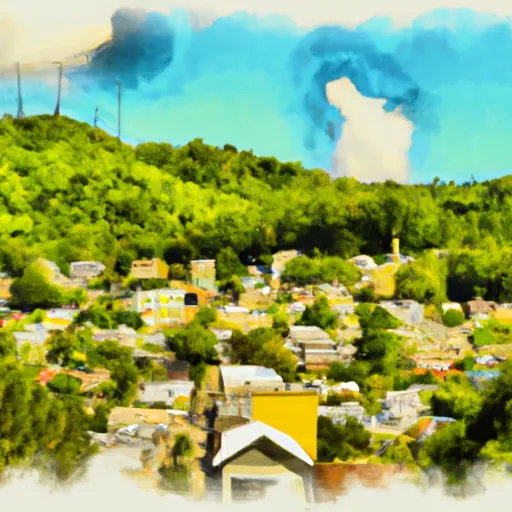-
 Snoflo Premium
Snoflo Premium
Get unlimited access to all our content
With no Ad interruptions! - Start Your Free Trial Login with existing account
Jellico
Eden Index
Climate
7.9
•
Recreation
3.1
•
Community
1.7
•
Safeguard
4.6/10

Located in Campbell County, Tennessee, Jellico is a small town in the Cumberland Mountains region. With a humid subtropical climate, Jellico experiences hot, humid summers and mild, cool winters. Summers are characterized by temperatures ranging from 70°F to 90°F, while winters see temperatures averaging between 30°F and 50°F. The area receives moderate rainfall throughout the year.
Hydrologically, Jellico is situated near the convergence of the Big South Fork Cumberland River and Clear Fork Cumberland River. These rivers offer opportunities for fishing, kayaking, and boating. Anglers can try their luck catching smallmouth bass, catfish, and sunfish.
Outdoor recreation enthusiasts will find a variety of activities to enjoy in Jellico and its surrounding areas. The nearby Cumberland Gap National Historical Park provides opportunities for hiking, camping, and wildlife viewing. With numerous trails, visitors can explore the diverse flora and fauna of the region. Additionally, the Cumberland Gap Tunnel offers a scenic drive and access to the Great Smoky Mountains National Park. Overall, Jellico offers an inviting environment for nature lovers to immerse themselves in the beauty of the Cumberland Mountains.
What is the Eden Index?
The Snoflo Eden Index serves as a comprehensive rating system for regions, evaluating their desirability through a holistic assessment of climate health, outdoor recreation opportunities, and natural disaster risk, acknowledging the profound impact of these factors on livability and well-being.
Climate Health Indicator (CHI): 7.9
Jellico receives approximately
1310mm of rain per year,
with humidity levels near 81%
and air temperatures averaging around
13°C.
Jellico has a plant hardyness factor of
6, meaning
plants and agriculture in this region thrive during a short period during spring and early summer. Most
plants will die off during the colder winter months.
By considering the ideal temperature range, reliable water supplies, clean air, and stable seasonal rain or snowpacks, the Climate Health Indicator (CHI) underscores the significance of a healthy climate as the foundation for quality living.
A healthy climate is paramount for ensuring a high quality of life and livability in a region, fostering both physical well-being and environmental harmony. This can be characterized by ideal temperatures, reliable access to water supplies, clean air, and consistent seasonal rain or snowpacks.
Weather Forecast
Streamflow Conditions
Upper Cumberland
Area Rivers
Upper Cumberland
Snowpack Depths
Upper Cumberland
Reservoir Storage Capacity
Upper Cumberland
Groundwater Levels
Recreational Opportunity Index (ROI): 3.1
The Recreational Opportunity Index (ROI) recognizes the value of outdoor recreational options, such as parks, hiking trails, camping sites, and fishing spots, while acknowledging that climate plays a pivotal role in ensuring the comfort and consistency of these experiences.
Access to outdoor recreational opportunities, encompassing activities such as parks, hiking, camping, and fishing, is crucial for overall well-being, and the climate plays a pivotal role in enabling and enhancing these experiences, ensuring that individuals can engage in nature-based activities comfortably and consistently.
Camping Areas
| Campground | Campsites | Reservations | Toilets | Showers | Elevation |
|---|---|---|---|---|---|
| Cooper Creek | 17 | 2,164 ft | |||
| Mulky | 11 | 2,172 ft | |||
| Deep Hole | 18 | 1,993 ft | |||
| Amicalola Falls State Park | None | 1,779 ft | |||
| Lake Winfield Scott | 44 | 2,979 ft | |||
| Frank Gross | 9 | 2,356 ft | |||
| Hanging Dog | 49 | 1,668 ft | |||
| Dockery Lake | 18 | 2,416 ft | |||
| Morganton Point | 82 | 1,753 ft | |||
| Poteete Creek | None | 1,832 ft |
Nearby Ski Areas
Catastrophe Safeguard Index (CSI):
The Catastrophe Safeguard Index (CSI) recognizes that natural disaster risk, encompassing floods, fires, hurricanes, and tornadoes, can drastically affect safety and the overall appeal of an area.
The level of natural disaster risk in a region significantly affects safety and the overall livability, with climate change amplifying these risks by potentially increasing the frequency and intensity of events like floods, fires, hurricanes, and tornadoes, thereby posing substantial challenges to community resilience and well-being.
Community Resilience Indicator (CRI): 1.7
The Community Resilience Indicator (CRI) recognizes that education, healthcare, and socioeconomics are crucial to the well-being of a region. The CRI acknowledges the profound impact of these elements on residents' overall quality of life. By evaluating educational resources, healthcare accessibility, and economic inclusivity, the index captures the essential aspects that contribute to a thriving community, fostering resident satisfaction, equity, and social cohesion.

